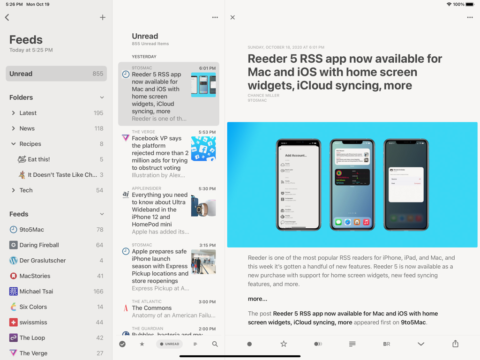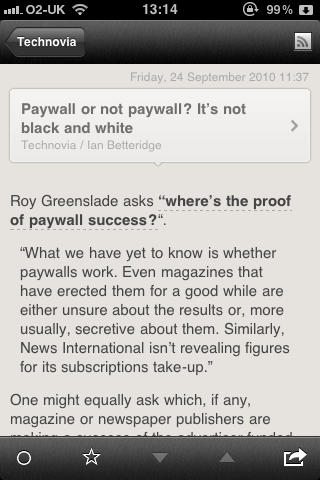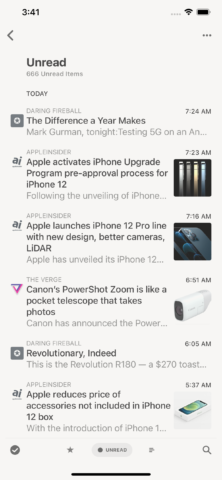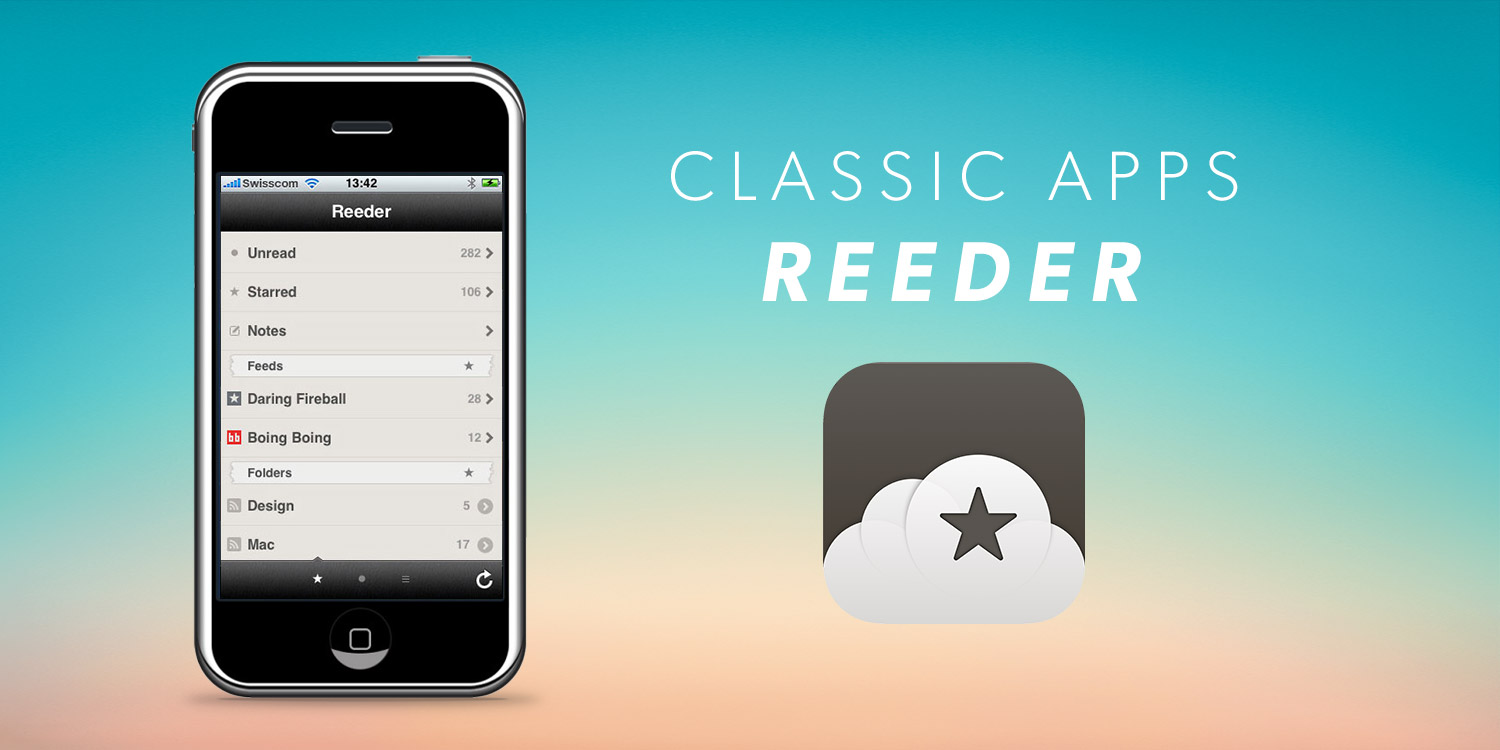The app that taught iPhone users how to control their news – and make it look great too
What was Reeder?
Reeder was an app that gave you a window into online sources you care about, free from distractions. It was based around feed aggregator Google Reader, which you used to subscribe to website feeds. On connecting Reeder to it, you could use the app to browse and read your saved articles in a minimal and focused interface.

An early version of Reeder for iPhone
Why was it a classic?
Reeder went the extra mile. Other Google Reader and RSS clients existed from the earliest days of iPhone, but Reeder wasn’t just about consuming news – it was about making that experience great. From the initial release, Reeder prized polish, usability and class.
Where is it now?
Google Reader went away years ago, but Reeder survived. It long ago wisely expanded the range of RSS engines you can connect it to, and more recently concocted one of its own, based around iCloud. Today’s app is rich in features too, rolling in a read-later service and tools that help you take in more of what you read.
Visit the Reeder website or get Reeder 5 ($4.99/£4.49) from the App Store.

Reeder 5’s three-pane view on iPad
Q&A: a brief history of Reeder
We speak to Reeder creator Silvio Rizzi about the birth of Reeder and how to bring an RSS app into the modern day.
Why did you create Reeder?
Silvio: It started in 2008 when I was finally able to buy my first iPhone. A new platform was very exciting, and I just wanted to do something with it. I always had side projects I was working on, and one happened to be an RSS reader. It was kind of a random decision, and so being able to work on Reeder as a full-time job was not something I expected!

Reeder in 2010
How important do you think RSS is? Why should more people use it?
An RSS reader is a tool that gives you control over what you’re reading. It’s raw and unfiltered, with no weighting of content – everything basically looks the same. It’s up to you to decide what is important. That might sound like a lot of work but having a unified news inbox which is just a chronologically sorted list of articles makes this process efficient. There are no distractions; everything is as minimal as possible.

Reeder in 2013, on a Retina display – note the more minimalist interface design
What have been the biggest highs and toughest challenges with Reeder over the years?
A high was the first release for iPhone, iPad and Mac. The day I released Reeder 1.0 for iPad was the day I realized this is it – Reeder is my job and not just a project I work on in my free time.
As for a big challenge, definitely when Google discontinued Google Reader in 2013. Back then, Reeder relied on Google Reader to supply your feeds, which meant it wasn’t really an RSS Reader but more a Google Reader client. It took me a while to deal with that, but today I don’t miss Google Reader because it made room for smaller services.
Why do you believe Reeder – now on its fifth major version – has had such longevity?
If I have something in mind, even if it’s something small, I try not to go down a ‘just good enough’ route. This makes progress slow, but there are no deadlines and so everything takes as long as it takes. In the end, I think that is what sells Reeder.
Also, I did a couple of full rewrites during the app’s history – and that kept it fresh and me motivated. It’s a lot more fun to write an app from the ground up!

Reeder 5: still sleek, but now with more features
What for you is the most important new Reeder feature?
Probably iCloud syncing. This enables Reeder to have its own read-later and RSS services, which I don’t have to charge for. It makes the app more complete, because it no longer depends on services that are not already part of the platform. For those who want to, it’s of course still possible to connect Reeder to third-party services, but that has now become entirely optional.

